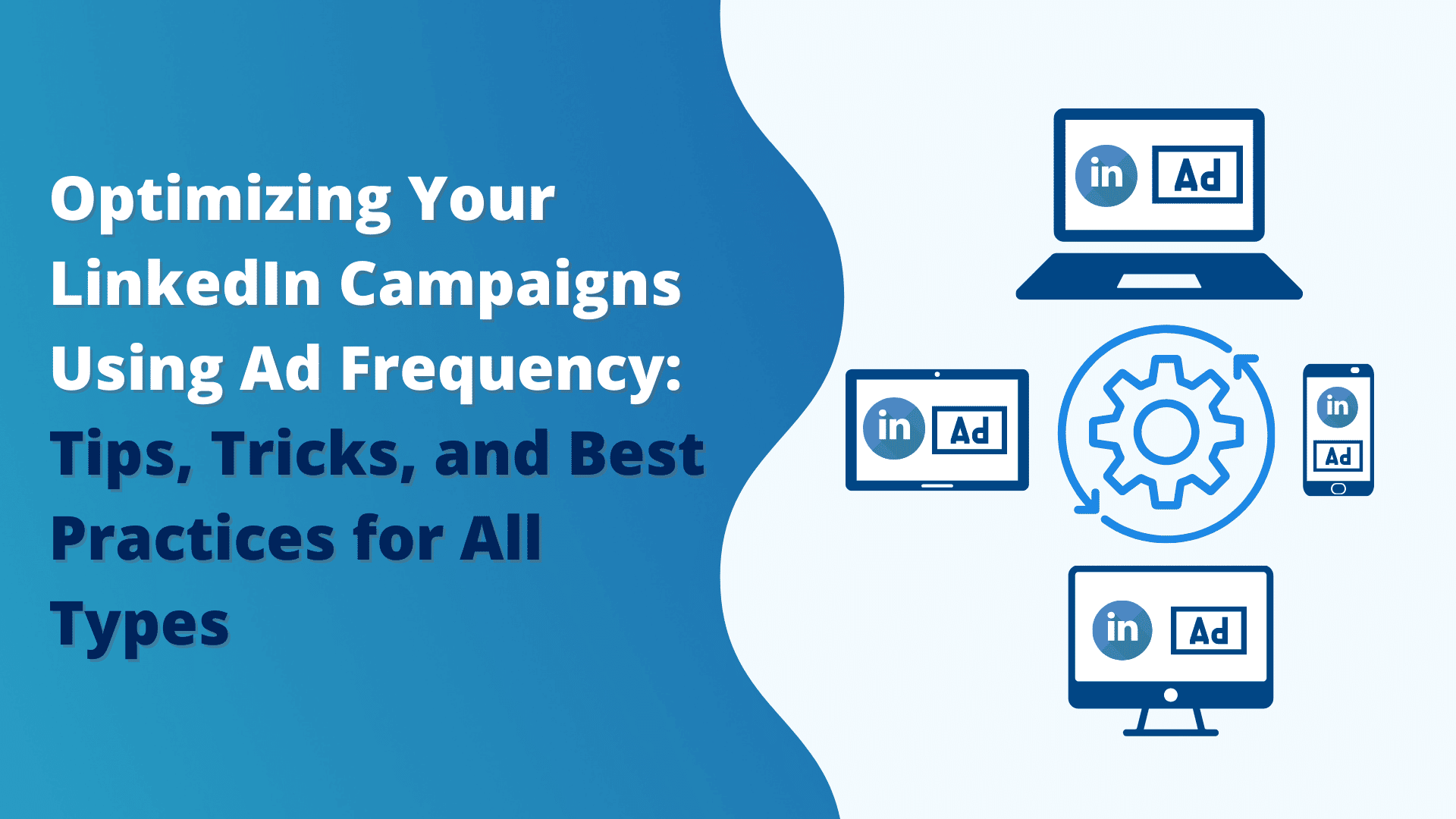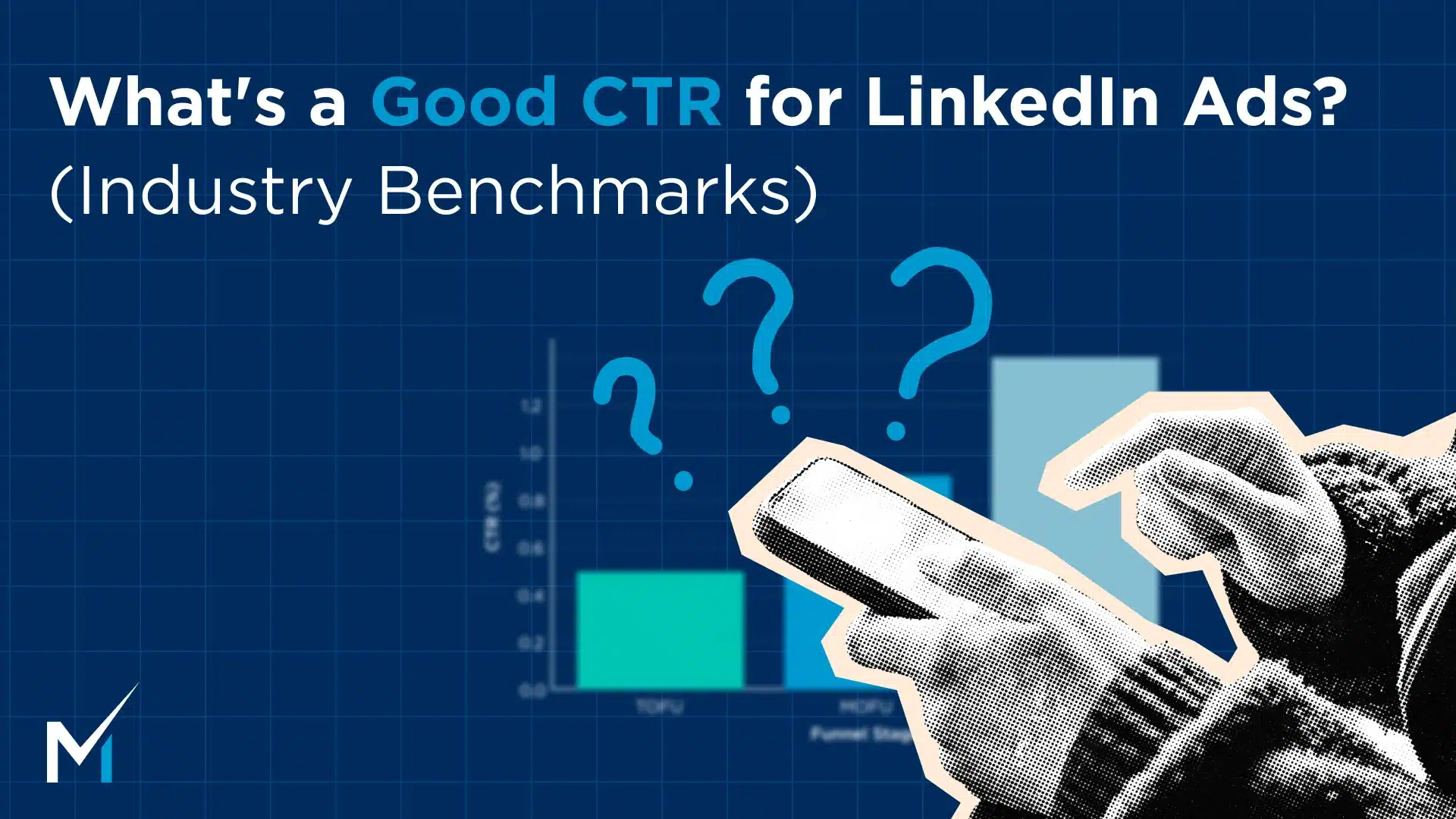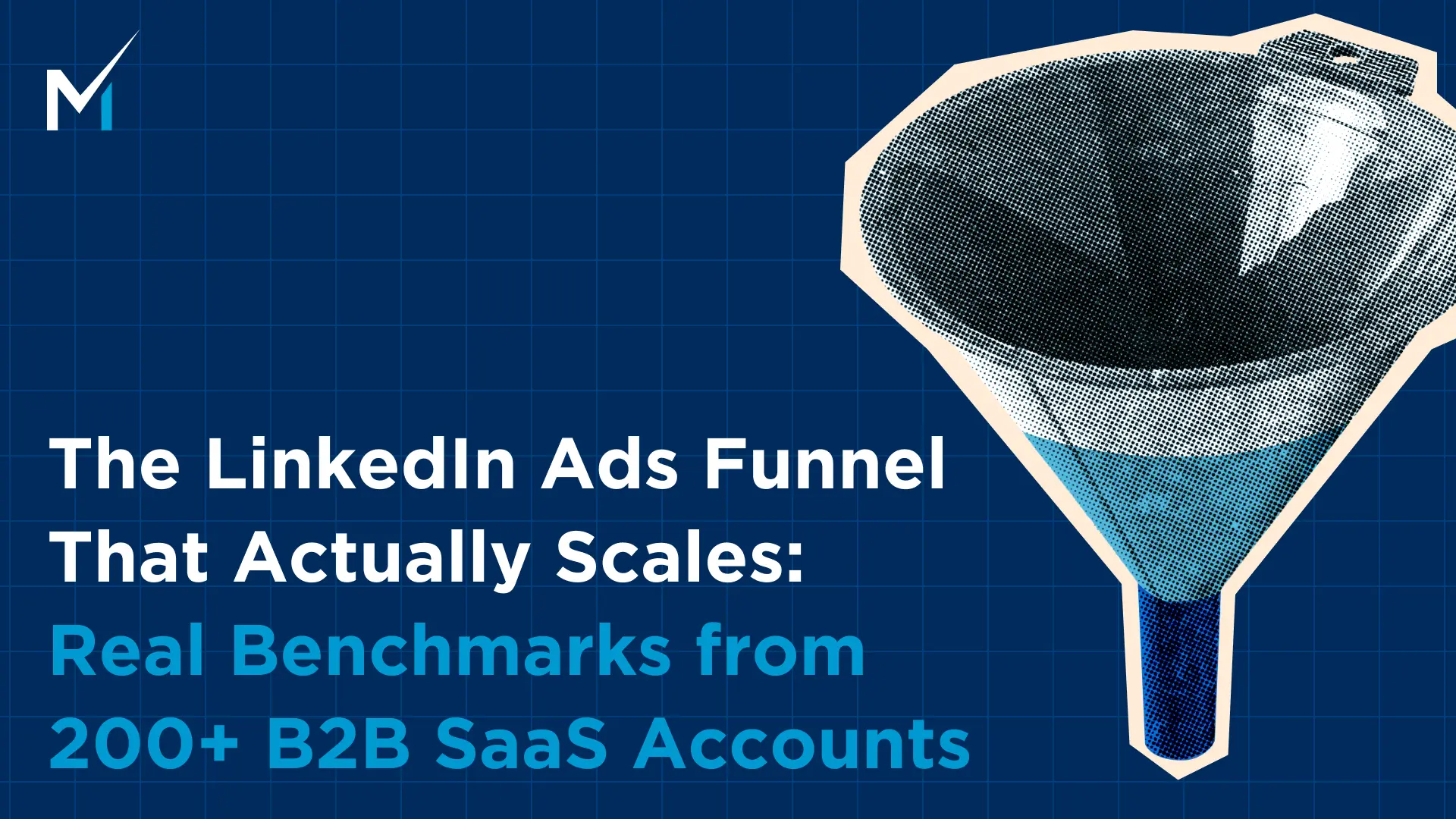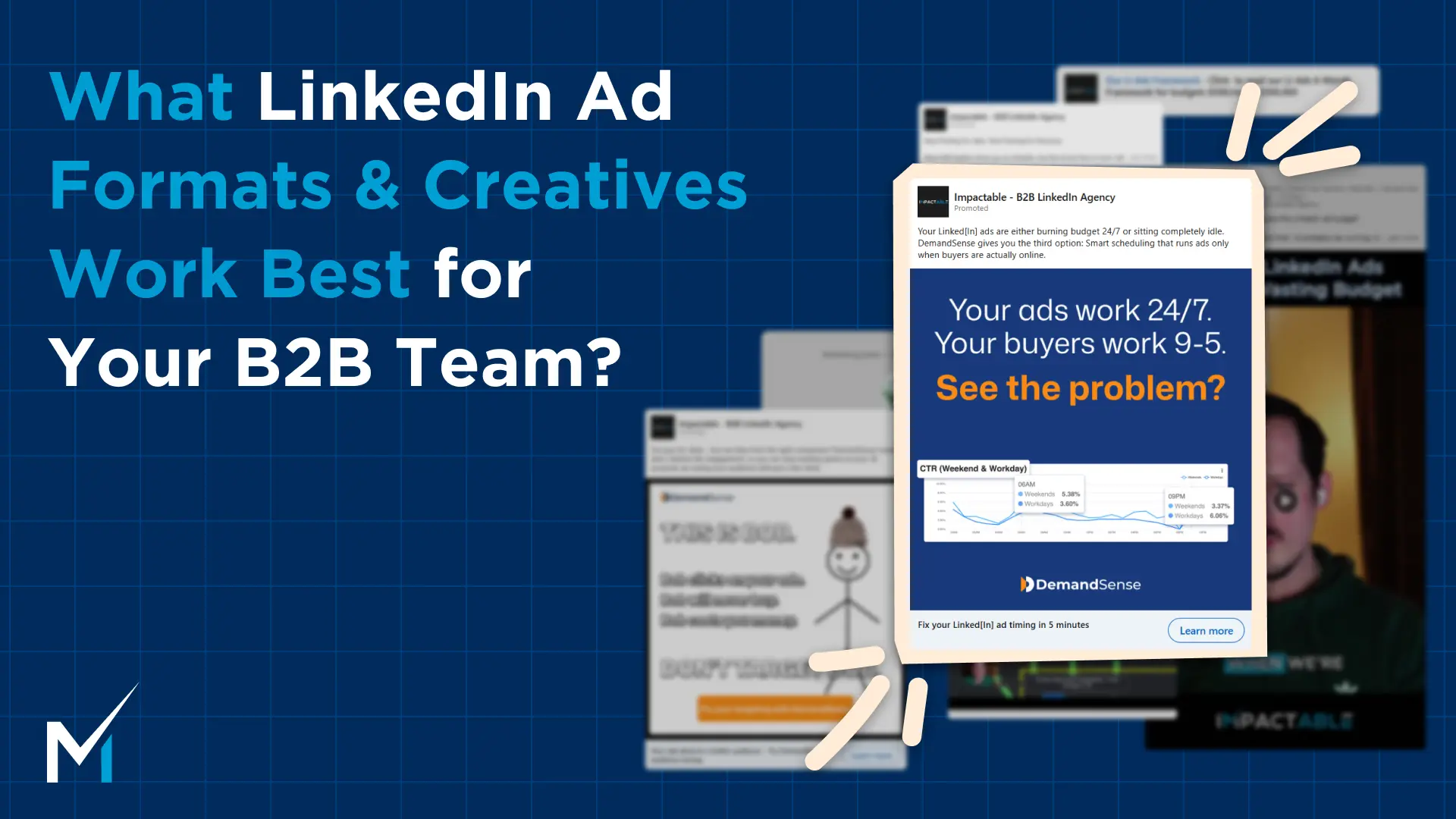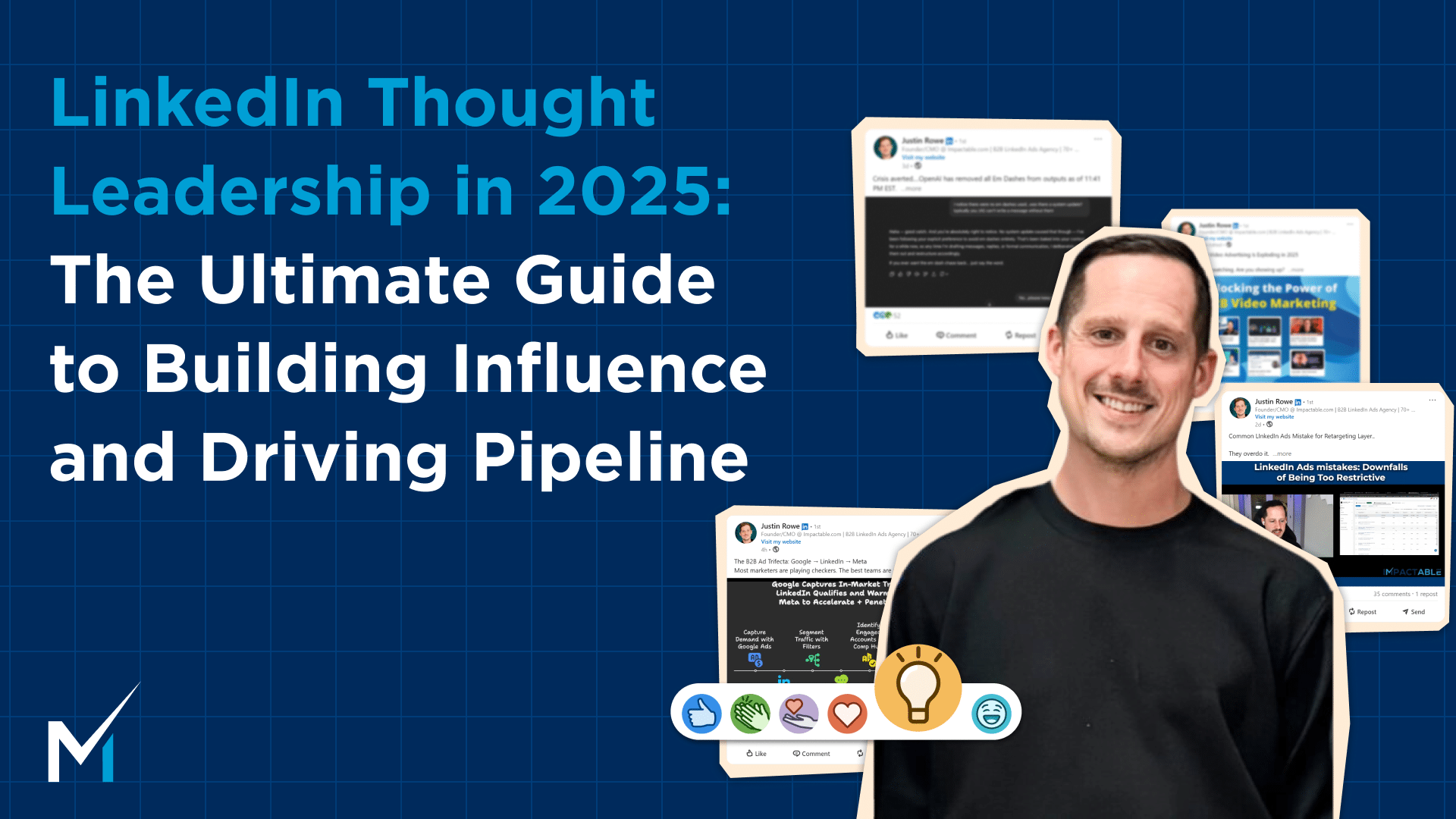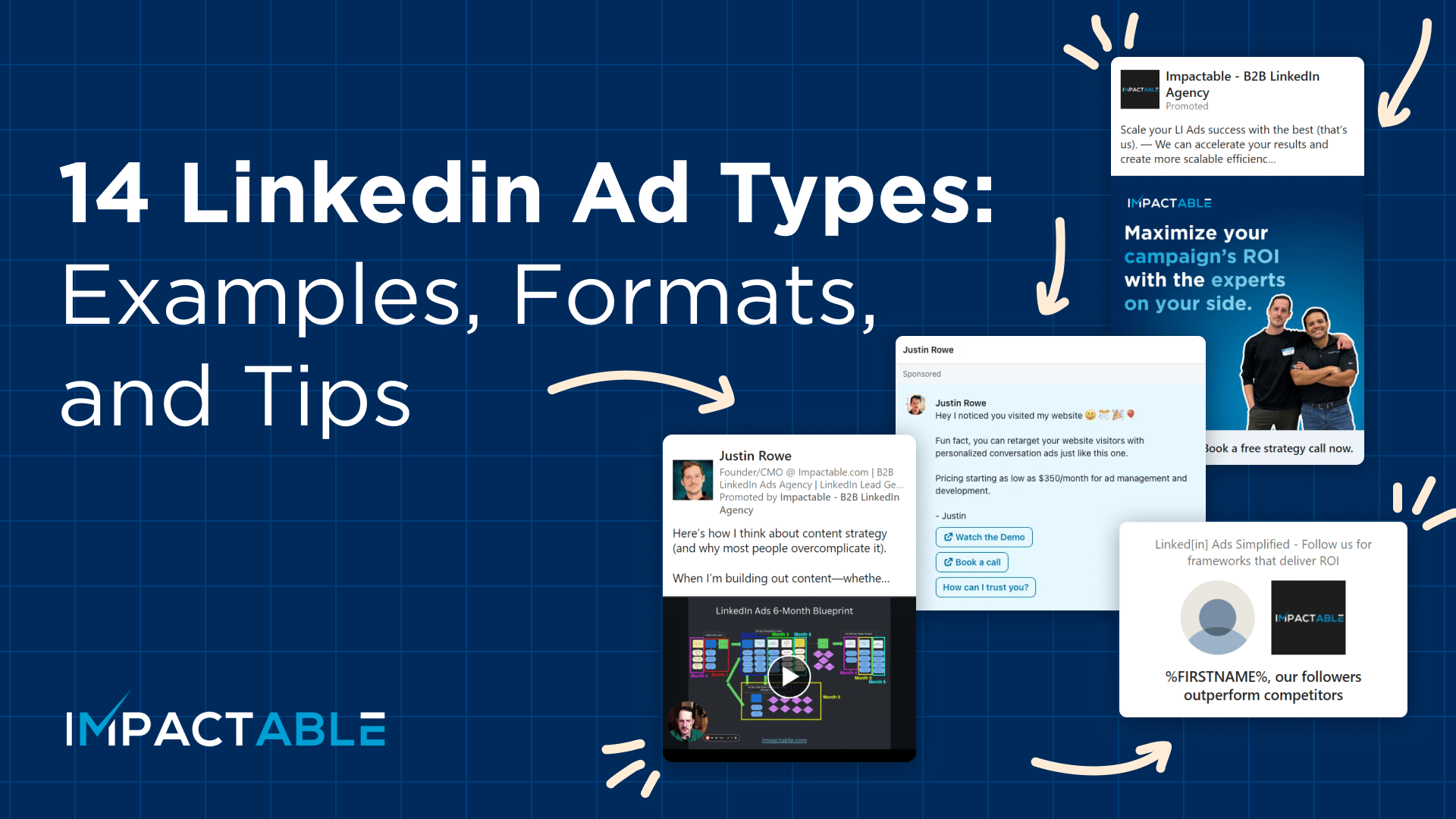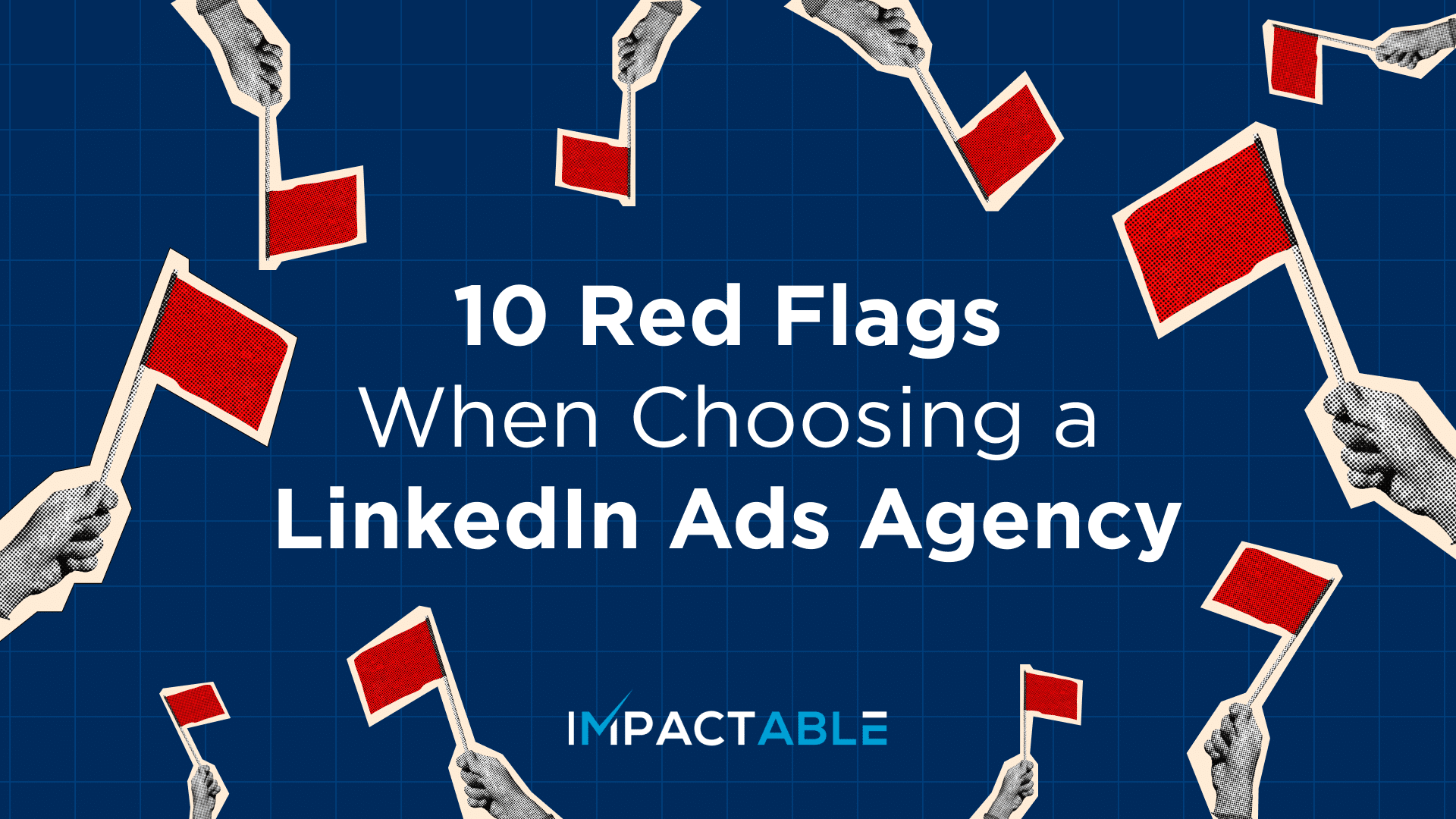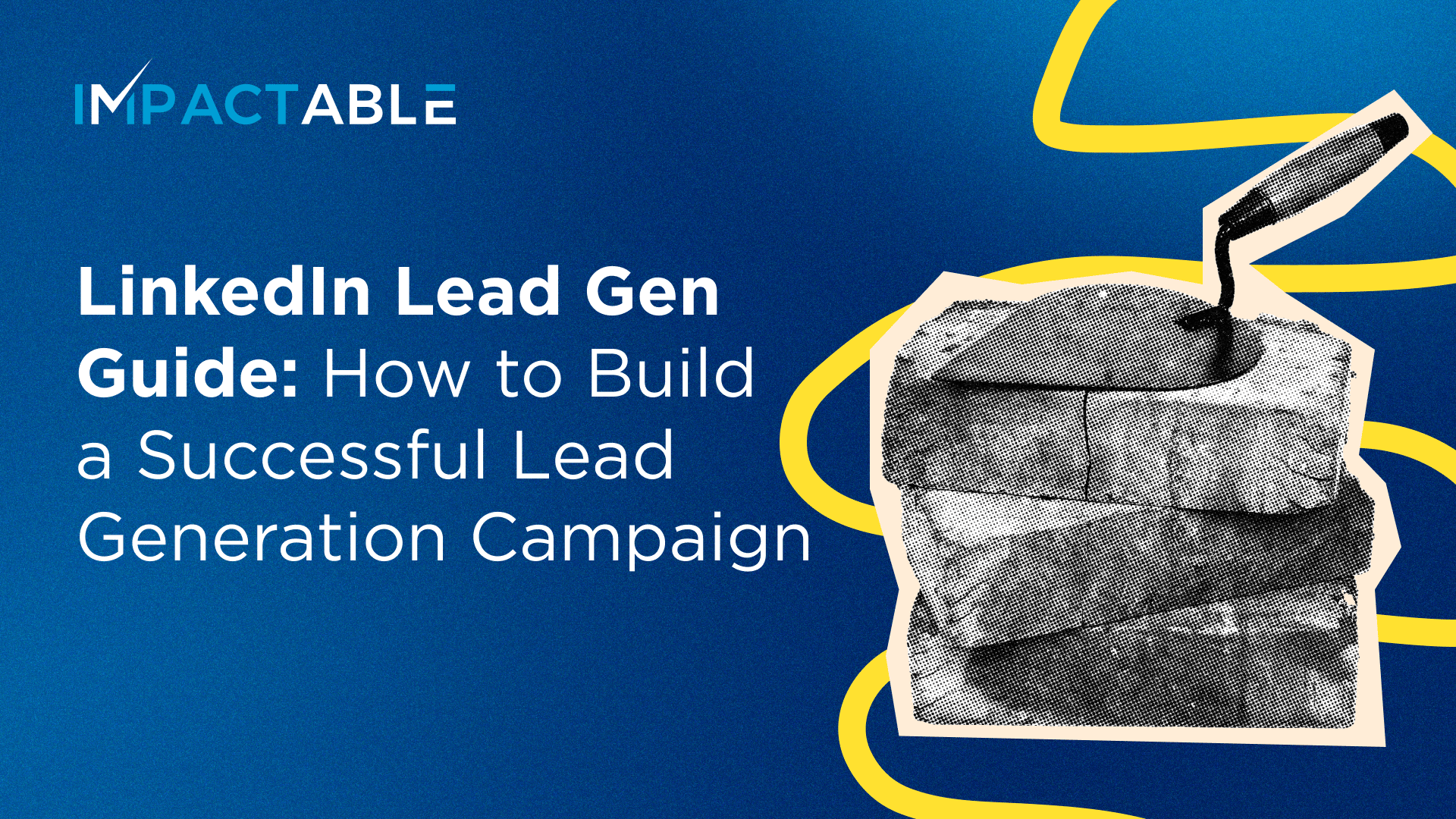Ad frequency, the average number of times a prospect sees an ad within a given time period, plays a crucial role in the performance of retargeting campaigns on LinkedIn. If the ad frequency is too high, it can cause ad fatigue among users, reducing the effectiveness of the campaign and lowering conversion rates. However, if the ad frequency is too low, it may not be sufficient to re-engage users and bring them back to the website.
In this article, we will explore the ideal frequency range of the different types of ads available on LinkedIn and how to use them to optimize your retargeting campaigns. Let’s get started.
Ad Frequency in Retargeting Campaigns
With retargeting campaigns especially, I like to pay close attention to ad frequency. It is a critical metric that helps us understand how well your campaigns are doing and how to tweak them for better results.
When looking at performance, it’s business imperative to look at ad frequency in the context of the entire campaign. For example, let’s say you have been running a campaign for 30 days. You don’t have enough data to draw valuable insights from yet; however, if the average prospect has seen your ads five times in the last 30 days, it’s reasonable to assume that they will see your ads 15 times in the next 90 days. This information becomes the guiding light for future campaigns so you can ensure that prospects are served the appropriate number of ads. Remember, the number of ads should always match the projected ad frequency; if they don’t, people will end up seeing your ads more or less than they ideally should, which can result in ad fatigue and diminishing returns in results.
It’s worth noting that if you only have five ads in a campaign, and the 90-day frequency is 20, then each prospect will, on average, see not just those five ads but each of those five ads four times. If your strategy involves showing unique and fresh creatives to your prospects over 90 days, your campaign should have enough creatives to match that frequency.
Optimization Settings for Retargeting Campaigns
By default, the settings are optimized for performance, which means that the campaign will prioritize and allocate more budget to the ads that are performing best. However, for retargeting campaigns, it’s often more beneficial to optimize for ‘even distribution’ where all the ads—and not just the top-performing ones — are shown ‘evenly’ to the prospects.
Your optimization settings should align closely with your campaign goal. Let’s say, for example, that you want to show 15 unique creatives to your prospects over 90 days. If you optimize for performance, the campaign will only serve the top 2-3 ads multiple times because they drive the most conversions. But your goal is to draw in (and keep!) your audience’s interest by showing them a variety of ads, so they feel compelled enough to take the next step. Seeing the same ads over and over will accomplish the exact opposite. Therefore, the even distribution setting is a better choice in this case.
In the end, ad fatigue is a real phenomenon that you should be mindful of when running an ad campaign. That said, even the most effective ads can lose their charm if shown to a prospect 30 times over 90 days. You can delay the inevitable by creating what I like to call “ads-on-demand” or an “evergreen strategy“. Here, the total number of ads is in sync with the average ad frequency in a given time frame so that an endless stream of fresh ads is delivered to the prospect throughout their time in each campaign.
Ad Frequency by Ad Types
Different ad types have varying levels of ad frequency, and understanding these differences can help you optimize your campaigns for maximum effectiveness.
Single-Image Ads
For most advertisers, single-image ads are a staple. Since they are used often and are more in demand, they have the highest cost per click and the lowest ad frequency.
LinkedIn does not have a specific ad frequency that they recommend or enforce for Single-image ads. However, the algorithm adjusts the frequency to reach the desired audience based on the audience size, targeting options, budget, and overall campaign goals.
Typically, in a 90-day retargeting campaign, you can expect the average frequency for a single-image ad to be around 5-10 impressions per user. To ensure maximum impact, you should have approximately 5-10 unique creatives that you can distribute evenly over time. You don’t have to unveil all your creatives in the first month. Start small, and continue adding more to the queue as time passes. As discussed earlier, optimize the campaign for even distribution.
Video Ads
Similar to single-image ads, video ads are also vying for in-feed competitive placements, and their frequency is generally around 5-10 unique impressions per user for a 90-day retargeting campaign. Again, you are looking at 5-10 unique creatives to avoid ad fatigue and ensure maximum effectiveness.
Text Ads, Spotlight Ads, and Follower Ads
Known for their high-frequency placements, text ads, spotlight ads, and follower ads appear not in-feed but towards the right of Linkedin’s interface. They are cost-effective and drive more impressions. In my experience, during a 90-day period, their frequency amounts to an average of 15-30 impressions per user. This means you can spend less than $50 a month on a text or a spotlight ad campaign to get 10,000+ impressions with a frequency of 10 or more. Your name and branding conveniently appear on the user’s screen in a non-disruptive manner every time they log in. With single-image and video ads, you’d be paying ten times more to achieve a similar outcome.
Text ads are also an inexpensive way to conduct A/B testing. For example, you can experiment with 20-30 versions of the same ads by trying different copy styles (maybe a punchy one-liner performs better than a data-heavy paragraph?) and design choices (is chrome yellow attracting more eyeballs than the muted pink?). Based on your findings, you can improve the look and ‘feel’ of ads and piece the best ones together to present a cohesive campaign narrative.
It can be challenging to attribute conversions to these types of ads, as they are not necessarily meant to convert. They are like little digital billboards for your brands that collectively help improve campaign performance but, individually, might only amount to a little.
Conversation Ads and Message Ads
Conversation and message ads involve sending direct messages from your LinkedIn Ads account to a singular prospect’s inbox. The upside is that there’s a higher chance of your message being read (what with being delivered directly to an individual’s InMail). The downside? You only have one chance to make a good impression. In contrast, text ads provide more room for testing and learning without burning a hole in your pocket.
To ensure that you put your best foot forward, I recommend personalizing the message as much as possible. Suppose a prospect from a particular industry, like marketing, visits your website. In this case, you can craft a message ad that speaks directly to their interests and highlight how your product or service can benefit them specifically. Here’s a quick example — “Hey there! I noticed that you were checking out our [offering X]. I wanted to reach out because I think you might be interested to know that we allow marketing agencies (like yours!) to white-label our services. I think it could be a great fit for your business and I’d love to chat more about it if you want.”
That said, text ads provide more room for testing and learning without burning a hole in your pocket.
Document Ads, Event Ads, and Carousel Ads
Carousel ads are gaining popularity on LinkedIn, and you might catch the algorithm pushing them more than usual. In my experience, the frequency of these ads tends to be lower than Single-image and Video ads. A typical frequency for document ads, event ads and carousel ads would be around 3-5 impressions per user per day or 10-12 impressions per user per month. They might be less popular (in comparison to others on this list) but are great for diversifying your ad campaign and reaching your target audience differently.
Contextualizing Ad Strategy in Terms of Ad Frequency
With ad frequency, you must have a clear big-picture strategy in mind.
Think about the key pieces of information you want your prospects to see, and ensure that your budget and audience size align with that goal. For example, if you have an audience of 5,000 prospects and ten pieces of information that best showcase your credibility and trustworthiness, you should aim for a high frequency in the first 30 days to reach them all.
Keep an eye on your frequency over time, and adjust your budget or audience size accordingly. If the frequency is lower than desired in the first 30 days, it might be time to loosen your purse strings or consider reaching out to 4500 prospects instead. The opposite is applicable if you find that your frequency is too high.
Overall, it’s important to be strategic about using ad frequency to your advantage; start by ensuring that you have something worth putting in front of your audience when running a campaign.
How to Avoid Diminishing Returns
Let’s say a prospect visits your website and leaves. Seeing your ads 15-20 times in the next 30 days is ideal. It’s enough to keep your brand at the top of their mind without overwhelming them. If you were to increase the frequency to 75 times, the ad would not become 2.5 times more effective; in fact, it may be even less so. Overall, it’s important to balance how often you want your ads to be seen and the cost of running them. The timing and pacing of these ads should also align with your buyer journey and sales cycle.
For example, if you’re an e-commerce company and someone leaves a product in their cart, targeting them with a high ad frequency for the first 30 or 60 days might make sense. However, if your product is enterprise software with a longer sales cycle, you should take a more gradual approach and nurture them over a more extended period with a lower frequency.
At Impactable, I’ve implemented a three-tier system for ad frequency. The first 90 days are focused on a moderate frequency of retargeting ads. If the prospect doesn’t engage with the ads or our business, we adopt a light nurturing approach resulting in low-frequency Follower, Text, and Spotlight ads for the next 180 days. During this time, if the prospect attempts to book a call or clicks through a retargeting ad, we launch a 30-day campaign with a high frequency and a strong call-to-action.
As a result, we are able to adjust the frequency based on the prospect’s actions and our sales cycle.
Conclusion
Understanding how to leverage frequency by ad type can help you make the most out of your LinkedIn ad campaigns and ultimately drive better results. It’s also important to consider ad frequency in relation to your specific business, buyer journey, and sales cycle.
We hope this post helps you leverage the unique strengths of different ad types and their ideal frequencies so that you can create campaigns tailored to the specific needs of your business and audience. For more one-on-one assistance, book a demo with an Impactable rep today!


